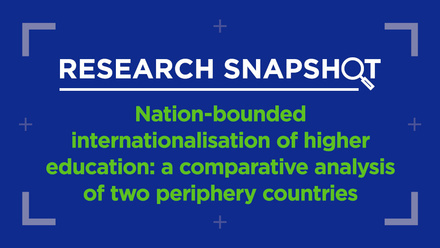Enabling gender equality through education

Although progress has been made in the advancement of women’s equality in education, there still exists a wide gap in leadership and gender disparity. There is no absence of women in the education field; however, in Europe, research shows that the higher up the academic ladder, the wider the gender gap.
According to She Figures 2018, a publication of the EU, women were a minority among senior academics in many European countries, including the Netherlands (18.7%), Germany (19.4%), France (21.9%), Switzerland (23.3%), Sweden (25.4%) and the United Kingdom (26.4%). Additionally, European women hold few positions in academic leadership: in the EU-28, women comprised only 21.7% of heads of higher education institutions in 2017. This inequality influences how students interpret gender roles and fosters inequality.
Towards an enabled world
With International Women’s Day approaching on March 8, it’s time to pause, assess and ask yourself: What about gender equality? The theme of this year’s Women’s Day is an empowering one: ‘An equal world is an enabled world’. As someone who champions gender equality and women’s empowerment for a living, it's a subject that I am frequently asked about. Yet even at a recent international education conference, I had both male and female colleagues from a variety of countries say to me, “that’s not a problem for us.”
Research shows that two-thirds of women face microaggressions at work, including having their judgement or competence questioned
Perhaps in your organisation or institution, or in your world, that may be true, but in many places across Europe and the globe, it is not. We need to continue our work towards equality, and what better way than through education?
Glenda Slingsby, Partnerships Director for International Women’s Day, sums it up nicely: “Gender balance is not a women's issue, it's an economic issue – so advocacy, inclusive mindsets and tangible action are needed from all. Stereotypes are being challenged and more diverse representation of women is evident. Clearly, however, there is still a continuing need worldwide for more progressive mindsets and inclusive behaviours to be forged.”
Women’s voices matter
Women offer a distinctive perspective and approach to leadership that can produce the same successful outcomes as men or perhaps better. More participative styles of leadership often attributed to women can foster more creativity and innovation. There is considerable evidence that female leaders have a more collaborative, androgynous, and transformational leadership style than their male counterparts. Women as leaders, compared with men, produce outcomes that can be described as more compassionate, benevolent and ethical, thus promoting the public good (Eagly, 2013).
However, women face some challenges at work. Besides more well-known issues such as equal pay, work-life balance, health and safety, research by McKinsey shows that two-thirds of women face microaggressions at work, including having their judgement or competence questioned. These slights, taken individually, can seem small, but they add up over time. Women who experience microaggressions view their workplaces as less equitable and are more likely to consider leaving their place of employment.
We need to equip women of all ages with appropriate gender-specific tools to succeed
Women in leadership is good for education, but there is work to be done. According to the International Women’s Day annual survey, education is the area where people think equality will be achieved first – close to half of the 18,000 respondents are confident that discrimination against women in education will have ended 20 years from now. Two-thirds believe that women won’t achieve equality in their country unless men take actions to support women’s rights. Inequality can subconsciously condition gender roles into students’ heads even at the youngest of ages, which is why it is critical that we model equality for our students of any age to see.
Supporting and advancing women
It has been widely asserted that women lead differently than men. In broad terms, women lead by concentrating more on relationships, achieving results through collaborative models and sharing information, while men focus on promoting individual contributions and achieving final outcomes. If that is the case, then a different kind of leadership support for women is appropriate and needed.
Many leadership development programmes treat all of their participants the same, espousing that with the cultivation of a few skill sets, all participants can walk away as stronger and better leaders. In reality, it is different for women. Girls have a natural impulse to become leaders; however, starting as early as middle school, this impulse is conditioned out by societal pressures. Not only do we need to cultivate leadership skills in young women earlier, but we also need to equip women of all ages with appropriate gender-specific tools to succeed.
Throughout our long history educating women at Wellesley, we have found that women-only classrooms lead to higher levels of engagement, empowerment, and in turn, results. By engaging in active and collaborative learning opportunities in a safe and respectful space, women are able to deepen their learning. By acknowledging shared challenges and opportunities, women build resilience, increase risk tolerance and develop alliances and networks that provide a greater support system far beyond the classroom.
So, international educators, it’s time to take another look at gender-based programmes. Yes, our goal is to be more inclusive, but if by offering specialty programmes that shine a light on women’s empowerment and advance women in the workplace starts to move the needle, shouldn’t we be saying yes?






